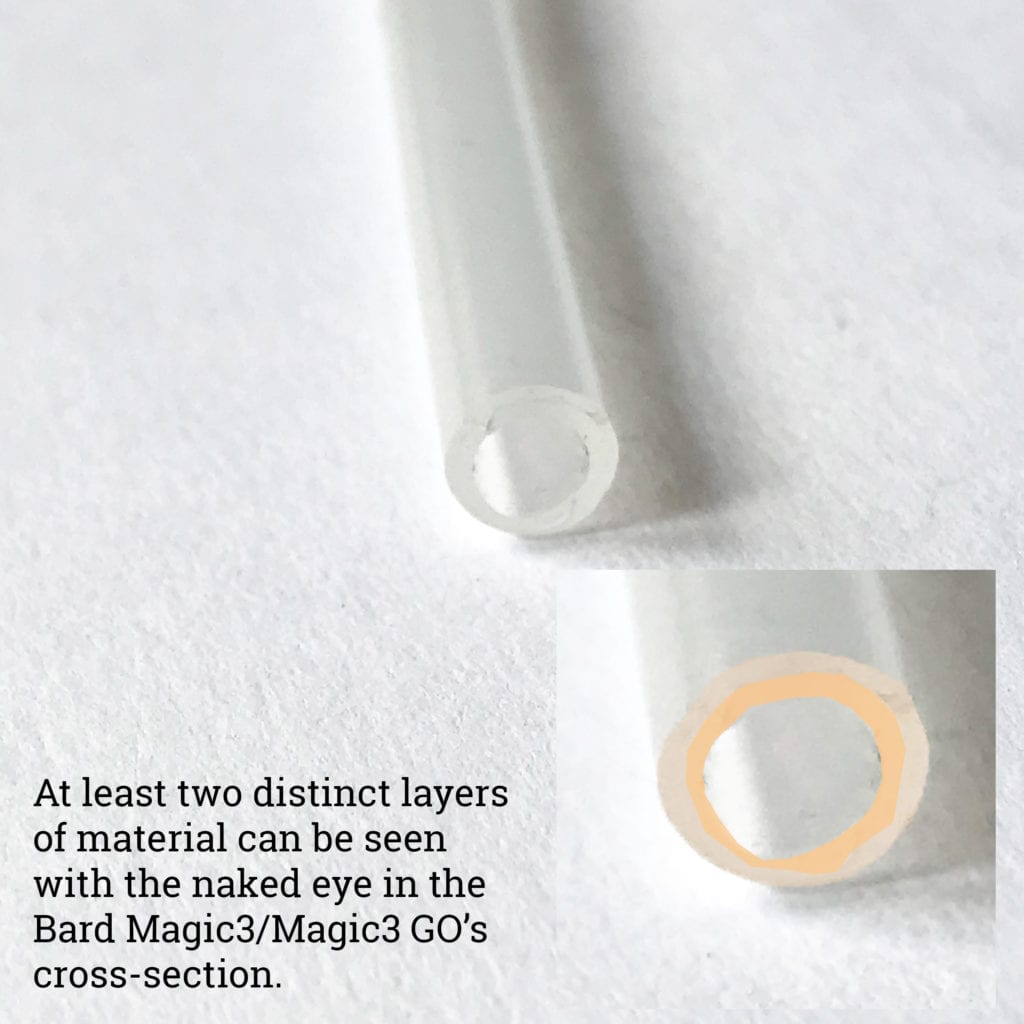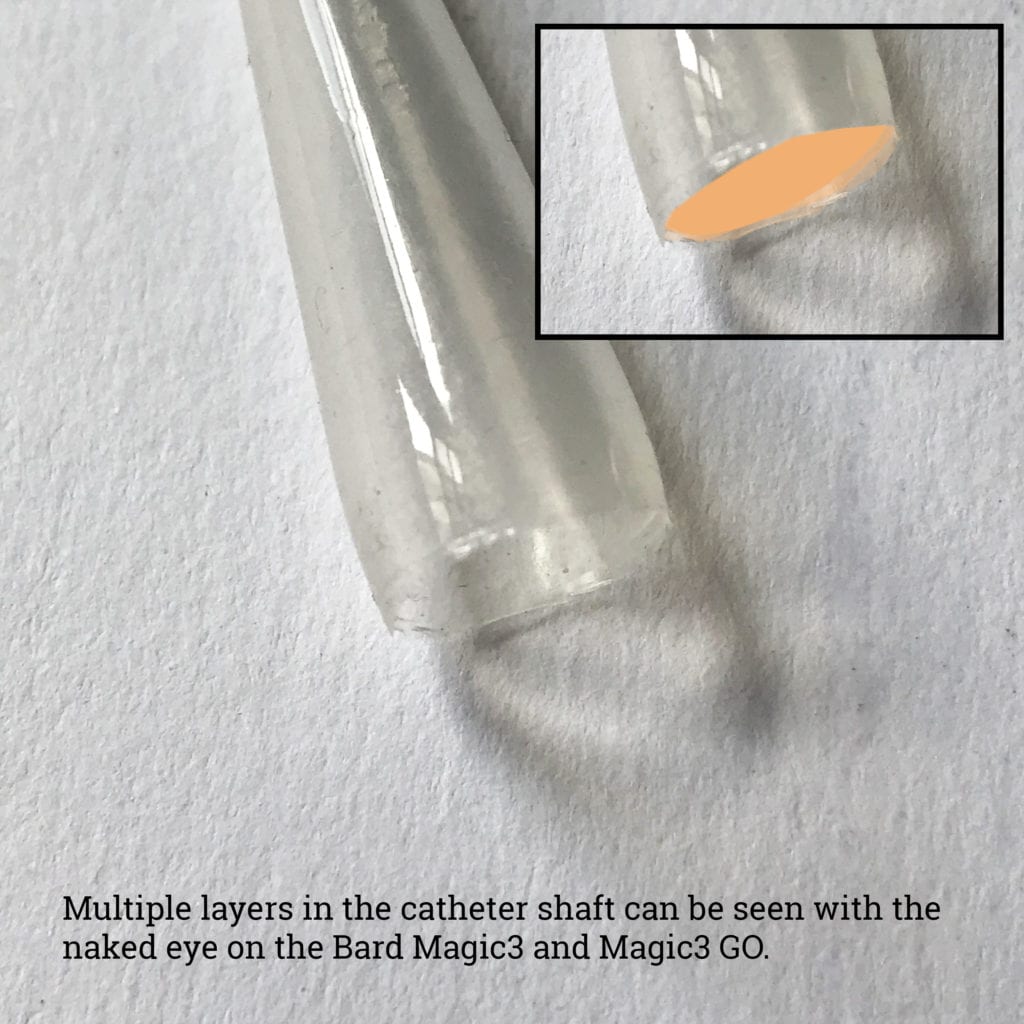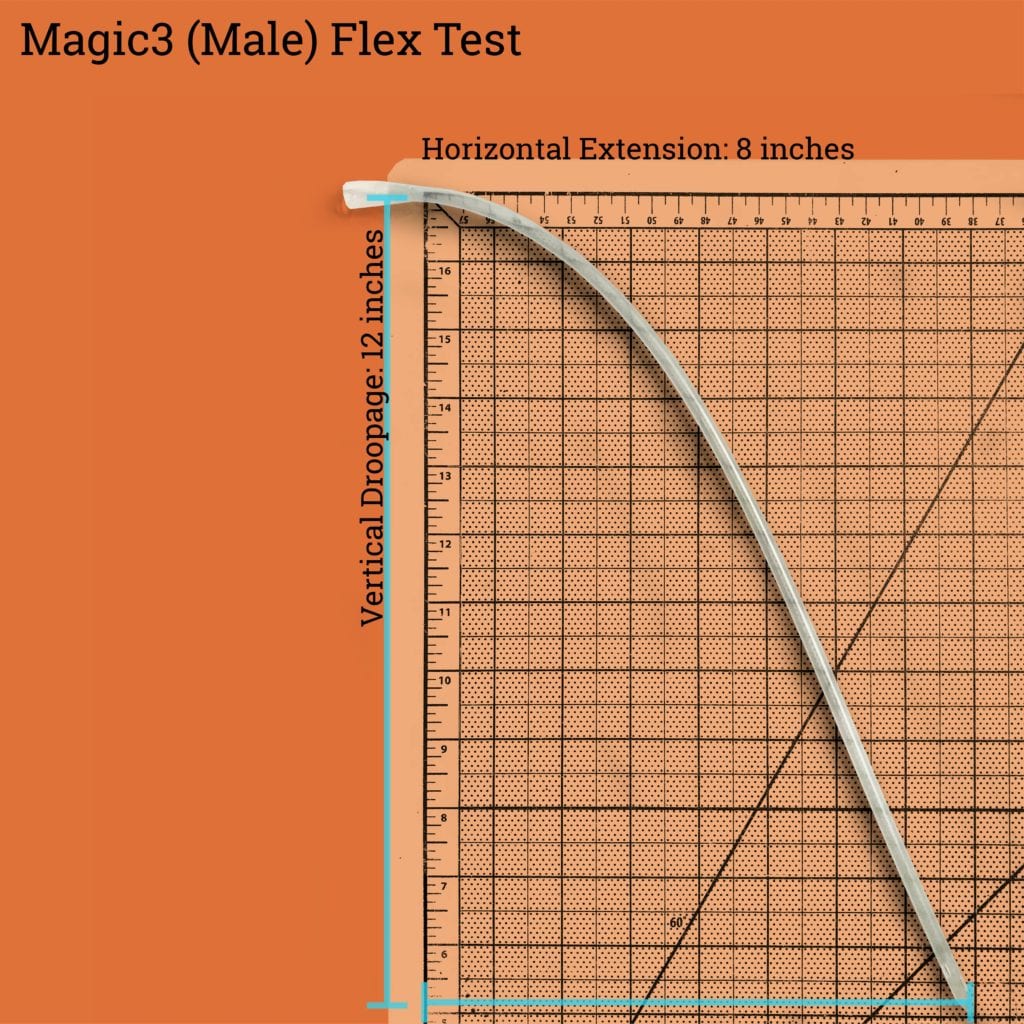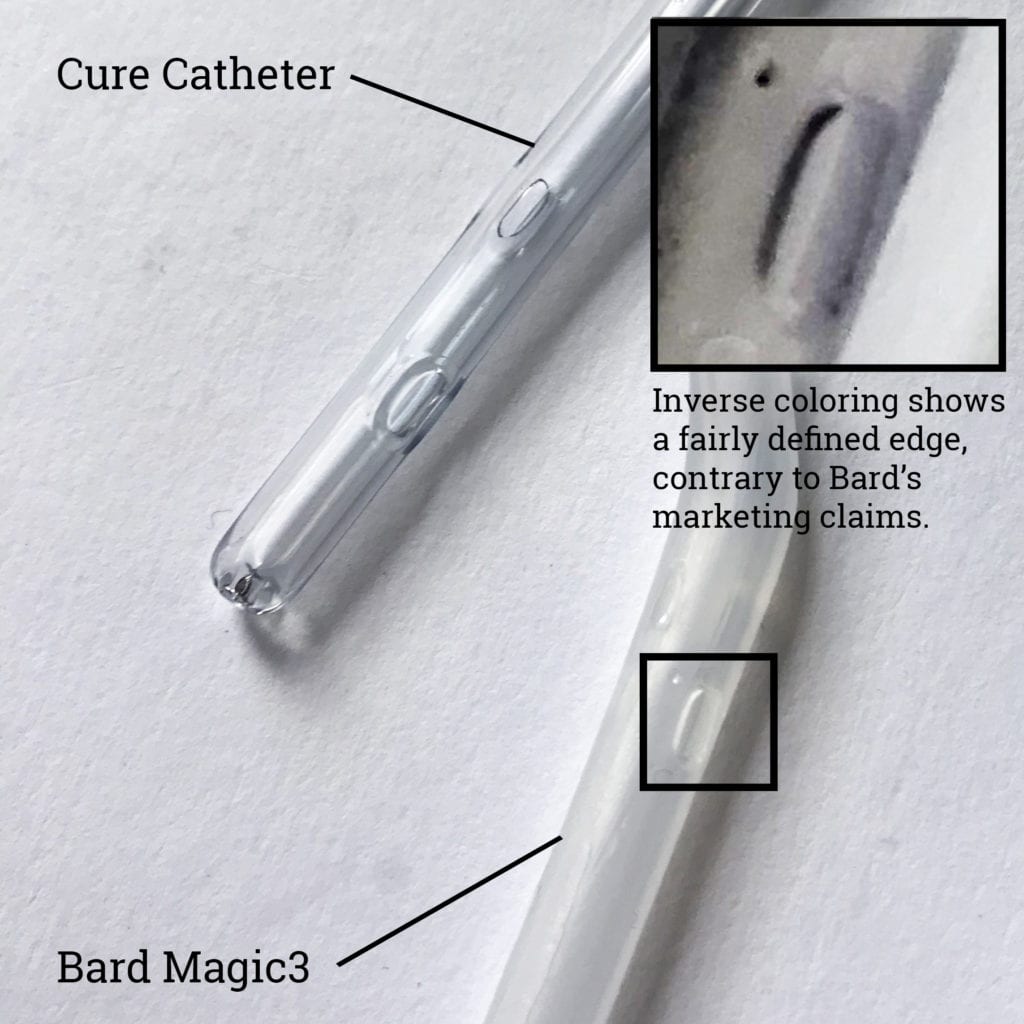Bard Magic3® Intermittent Catheter

Product Overview
Available Lengths: 16 inches (Male); 10 inches (Pediatric); 6 inches (Female)
Available French Sizes: Fr 6 (Pediatric only), 8 (Pediatric Only), 10, 12, 14, 16, 18, 20
Available Tips: Coudé and Standard
Pros
All-silicone construction means that the catheter is biocompatible and safe.
The hydrophilic coating on the sample that we tested was very robust and didn’t feel grainy when dry.
Our Verdict
There’s a lot to like about this catheter, but your mileage may vary given the number of complaints filed with the FDA.
Cons
Lots of adverse events filed with the FDA.
Some of the marketing messages on the Bard® website just don’t hold up to what the competition is doing.
Material
The Bard Magic3® Hydrophilic catheter is an all-silicone catheter with a hydrophilic coating. (The FDA statement that’s linked here is for the Rochester Magic catheter, which was acquired by Bard in the 2010s.)
Unlike many other catheter designs, the funnel is not made out of a stiffer plastic, nor is it glued onto the catheter – instead the catheter itself flares out in a unibody design. Bard’s marketing materials emphasize the 3-layer construction of the catheter – the outer layer is soft to maximize comfort, the middle layer is firm to maximize handling ability, and the inner layer is pliable for easy navigation. To be honest, it’s difficult to assess how much this construction has on the actual user experience, but you can see evidence of the three separate layers in the funnel end of the catheter – it’s harder to pick out the different layers in a cross-section.


As for the catheter itself, medical grade silicone is known to be extremely biocompatible, which is why it’s used in a number of different medical device applications. Silicone doesn’t break down the same way that plastics do, so they don’t leach into the environment or end up as microparticles in the ocean, though the extent to which this is true may be exaggerated. It does end up in landfills, as there isn’t an easy way to reprocess or recycle it, and it isn’t biodegradable.
Flexibility

The male catheter that we tested with drooped down 12 inches while extending out 8 inches. It’s very flexible, but because it comes with a hydrophilic coating, it’s not as difficult to use as something like the GentleCath Uncoated catheter, because you don’t have to worry about lubricating it. That being said, if you do purchase these catheters, try to opt for the version with an insertion sleeve – it’ll help you manage the catheter without touching it directly.
Packaging
The Magic3® Hydrophilic catheter is packaged in a two-part plastic package that features cut outs that enable an individual with low dexterity to open the packaging. The packaging contains a sterile water packet inside that you’re meant to burst before opening the package. This allows the water to spread through and hydrate the coating. There is also a sticker on the package that allows you to stick the package to a wall once you’ve peeled the sticker off. The sticker itself wouldn’t be easy to peel for someone with limited dexterity.
Lubrication
When dry, the hydrophilic coating still feels smooth to the touch, unlike the coating of some other hydrophilic catheters that we have reviewed. We tried to find additional details on what the coating is actually made of, but the FDA application summary was light on details. Hydrophilic coatings are typically made out of a chemical called polyvinylpyrrolidone, also known as PVP. Generally considered to be safe, there have been very rare documented cases of allergic reactions to this material, particularly when it comes into contact with mucous membranes (as is the case with catheterization).
When hydrated, the coating almost becomes gel like, and can build up on the hands or the urethral opening. Wiping will likely be needed to avoid a mess. There were lots of product complaints logged with the FDA about the lubrication of these catheters – some didn’t seem to have a hydrophilic coating, whereas others arrived with burst or empty water sachets.
Insertion
Instructional videos for this product can be found here.
Once hydrated, the hydrophilic coating does a good job of making insertion into the bladder straightforward. Unless a lot of pressure was applied, the catheter didn’t seem to buckle or do anything of the sort.

The catheter comes with 4 eyelets, which is more than the standard 2. This might translate to faster bladder drainage, but we’d suspect that the main limitation there is French size and how much volume can move down the catheter, as opposed to how may eyelets there are. The eyelets are called “comfort-sized” in marketing materials, but compared to a Cure Catheter®, these eyelets don’t seem particularly comfortable – they seem like they were punched through, not polished. They were also sized differently in the models we reviewed, and some of the eyelets weren’t punched all the way through!

It is possible to order this catheter with a “SURE-GRIP™” sleeve, which comes at an additional cost. The sleeve is a short 1.5-inch polyethylene sleeve that’ll require a degree of dexterity to use easily. It’s certainly more substantial than the sleeve that comes with the GC Glide catheters. The one that we tested with came with the sleeve located about halfway down the package, so we had to take care not to touch the catheter while trying to retrieve the sleeve.
Without the sleeve, if you’re a man using this product, it’s pretty much impossible to use it without directly touching every inch of the catheter as it goes into your body. We’ve known guys who remove the packaging from the catheter, and then use it to handle the catheter without touching it directly. That might be worth a shot to reduce infection potential if you think the packaging is cleaner than your hands are.
It’s also important to know that even with the sleeve, you still have a risk of contaminating the catheter when inserting it – the urethral opening is known to house pathogens that can cause UTIs – if you’re worried about getting one, make sure you wipe yourself down with sterile wipes before trying to insert the catheter.
Adverse Events
There were an astonishing 325 complaints (almost 1 per day!) filed with the FDA about the Magic3® catheter in 2019.
The complaints centered around everything from UTIs, to catheters arriving without the hydrophilic coating or with burst water sachets, to missing eyelets (as observed in one of our test units), missing sleeves, missing catheters, different sized catheters than what was ordered, and even a brown coating. The purchaser of the catheter with the brown coating reported sustaining a UTI after using it.

The review of FDA Medical Device Reports from 2019 provides a limited snapshot of recent product performance in the marketplace.